Nosib Project
Nosib Vanadium and Copper-Lead-Zinc-Silver Deposit
The Nosib prospect is located at the western end of the Company’s EPL3543 (Figure 1), 20km southwest of Abenab. Nosib is a new discovery that has produced a number of exceptional, thick and high-grade, vanadium-copper-lead-silver RC and diamond drilling intersections over the last 12 months.
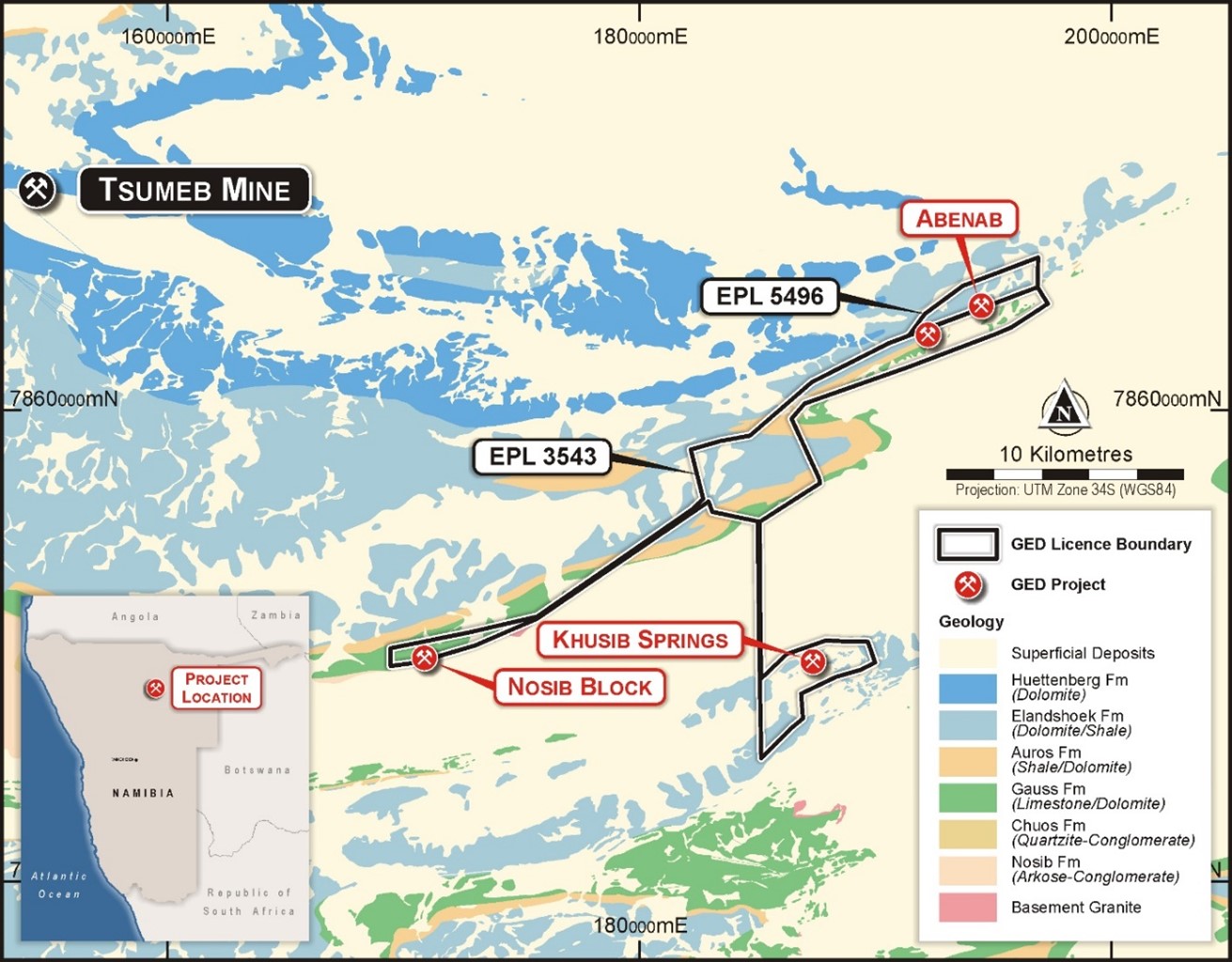
The Nosib mineralisation is hosted by an arenaceous to conglomeratic unit which is poorly exposed and lies at the base of the Damara sedimentary sequence, overlain by the dolomitic units that host the majority of the base metal mineralisation in the OML.
Drilling has identified and defined two distinct zones of mineralisation at Nosib:
- A shallow, high-grade, vanadium-copper-lead-silver supergene enriched zone that has produced a series of high-grade intersections of copper, vanadium and lead with silver including:
- 53.52m @ 1.15% Cu, 0.62% V2O5, 3.49% Pb, 4.57 g/t Ag from surface in NSBDD008 incl. 11.74m @ 2.67% Cu, 1.42% V2O5, 9.21% Pb, 7.12 g/t Ag.
- 45.70m @ 1.0% Cu, 0.72% V2O5, 2.8% Pb, 4.00 g/t Ag from surface in NSBDD002 incl. 12.10m @ 3.2% Cu, 2.54% V2O5, 9.8% Pb, 8.0 g/t Ag, and,
2. A thick, stratabound, copper-silver sulphide zone at depth that has produced significant true-width intersections of sulphide mineralisation up to 45m thick, across the entire thickness of the northerly dipping arenite/conglomerate host unit, including in NSBDD003:
- 44.54m @ 0.38% Cu, 3.6 g/t Ag from 62.3m incl. 11.10m @ 0.70% Cu, 5.6 g/t Ag
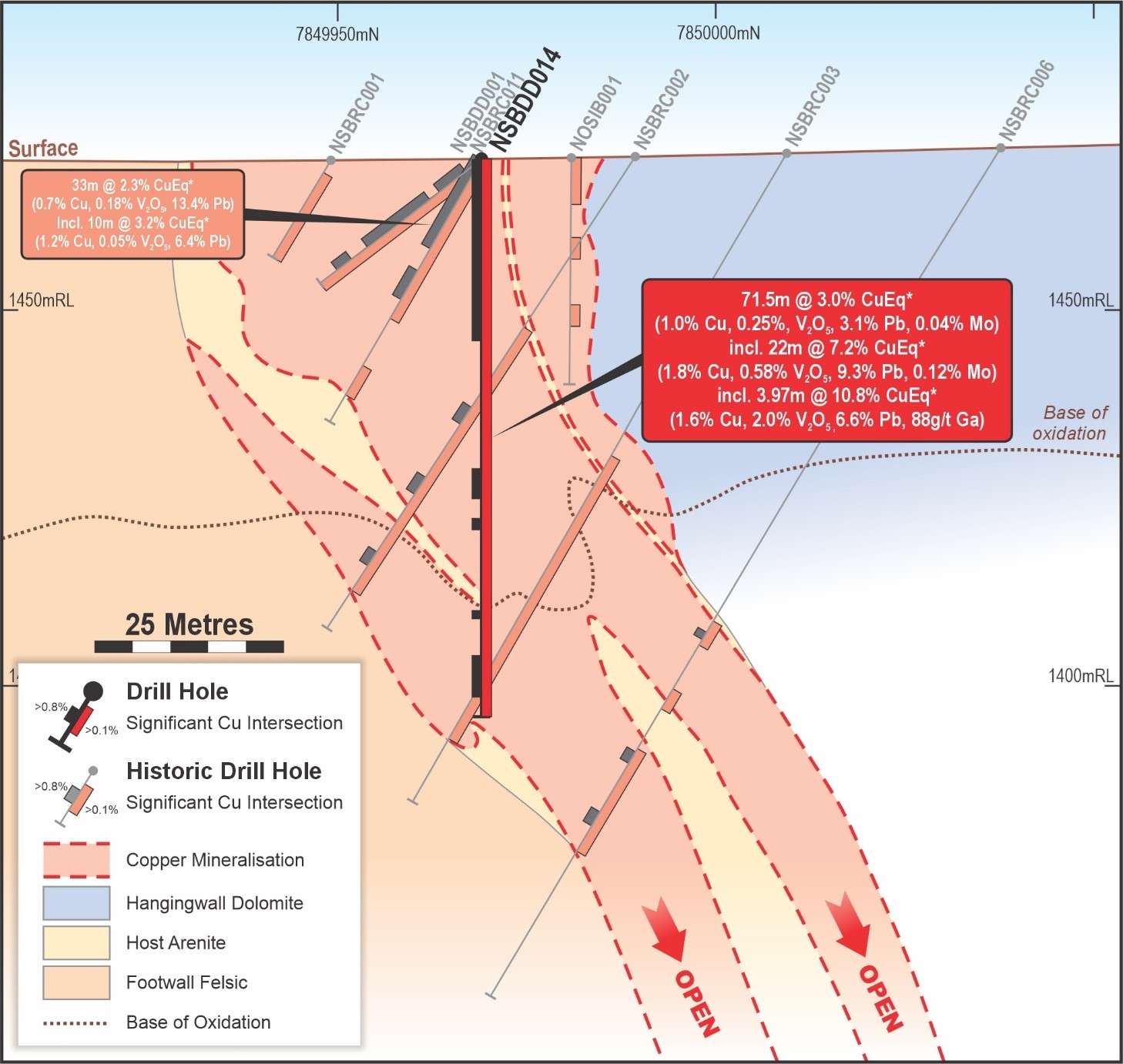
Figure 2: Nosib Prospect, cross section 800,980mE showing NSBDD014 intersection
More recent drilling (2023) on step-out sections to the west of the previously drilled deposit extended the copper-silver stratabound sulphide deposit to the west and at depth. The most westerly intersection in the recent diamond drilling program intersected 44.22m @ 0.6% CuEq* (0.50% Cu, 3.2 g/t Ag) from 34.8m in NBSDD007 and included a massive sulphide zone of 0.49m @ 10.3% Cu, 56.9 g/t Ag (Figure 3). Further drilling is planned to extend this zone, to target a substantial stratabound Cu-Ag sulphide resource.
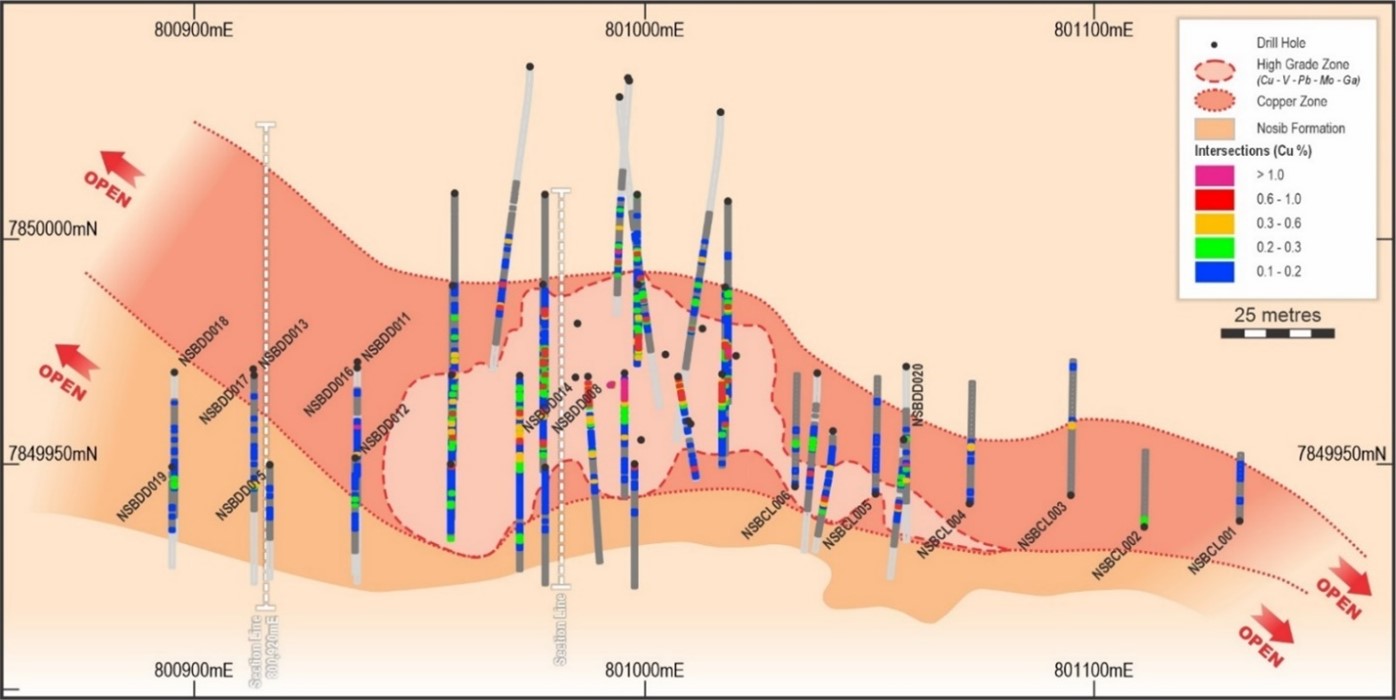
Figure 3: Nosib drillhole locations and newly identified copper mineralisation plan-projection
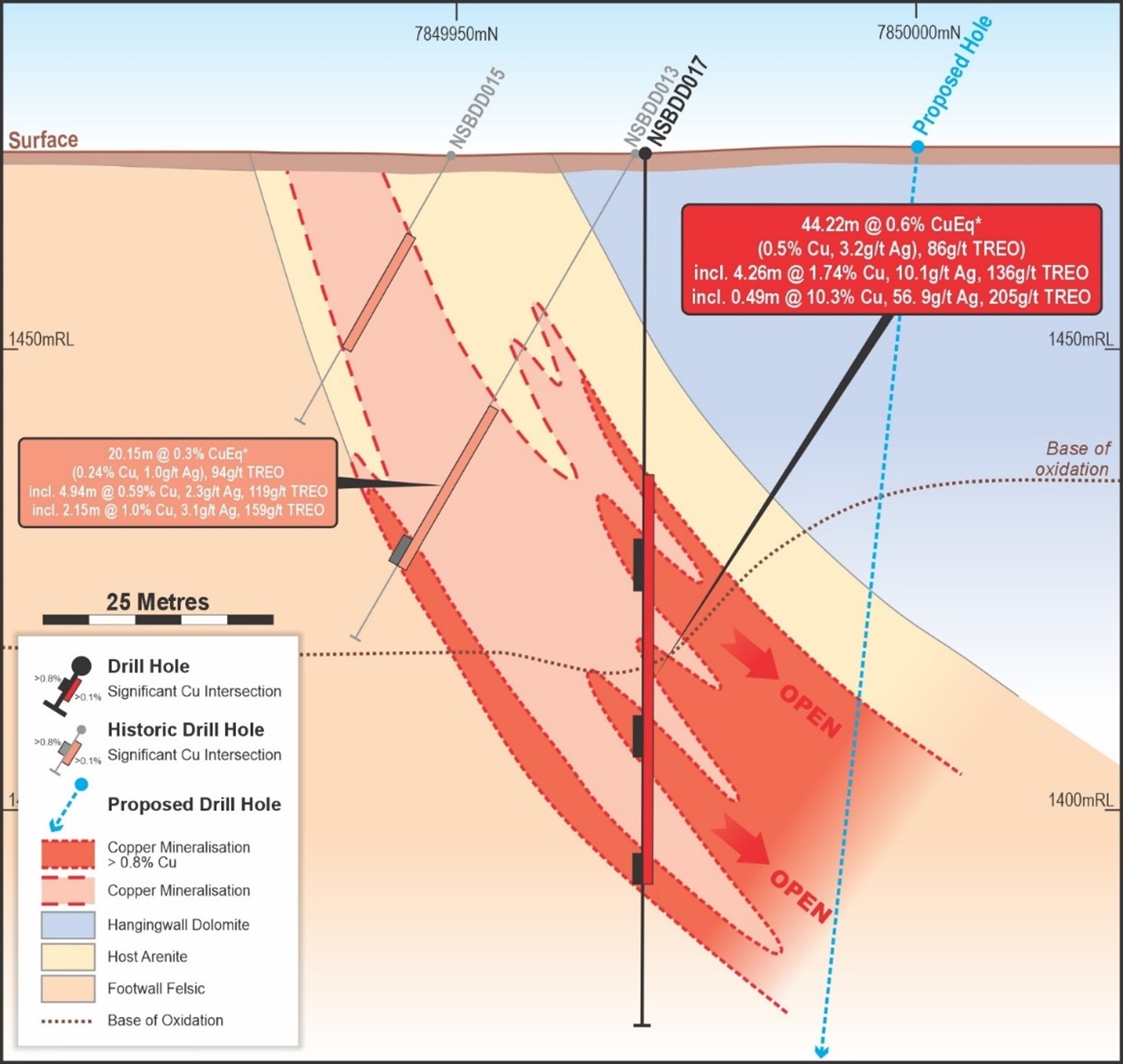
Figure 4: Nosib Prospect, cross section 800,920mE showing NSBDD017 copper-silver intersection
Nosib Resource, Mineral Resource Estimate and Development Studies:
Mineral Resource modelling and estimation has been carried out by Shango Solutions. The Nosib mineralisation includes a supergene vanadium-copper-lead-silver zone which has been drill defined at 10m to 20m spacing with RC and diamond drilling over a 100m strike length and to approximately 80m vertical depth (Figure 3).
The supergene mineralisation at Nosib includes the secondary vanadium minerals descloisite and mottramite. Descloisite is the same lead-zinc-vanadium hydroxide mineral that occurs at Abenab and Mottramite is a copper-lead vanadium hydroxide. Metallurgical testwork shows that these minerals respond very well to gravity concentration. Metallurgical gravity concentrate testwork on two bulk samples (drill core and surface samples) of the Nosib mineralisation has produced two high-grade gravity concentrate samples. The combined grade of the concentrate below represents a 5-times upgrade of vanadium and other critical elements:
- 5% V2O5, 5.9% Cu, 18.9% Pb, 0.11% Mo, 12g/t Ag, 437 g/t Sb, 107g/t Ga, 17g/t Ge, 354 g/t TREO
Metallurgical recoveries to gravity concentrate range up to 71% for vanadium. Further, ongoing testwork on the high-grade concentrate will include hydrometallurgical leaching to optimise recovery of high-value vanadium products, as well as copper, lead and other critical and rare metal by-products such as molybdenum, antimony, gallium, germanium and potentially HREEs.
The Maiden Mineral Resource estimate for the Nosib copper-vanadium-lead-zinc-silver discovery (released 24 June 2024) was prepared by Shango Solutions of South Africa (Shango) and is summarised in Table 2 below:
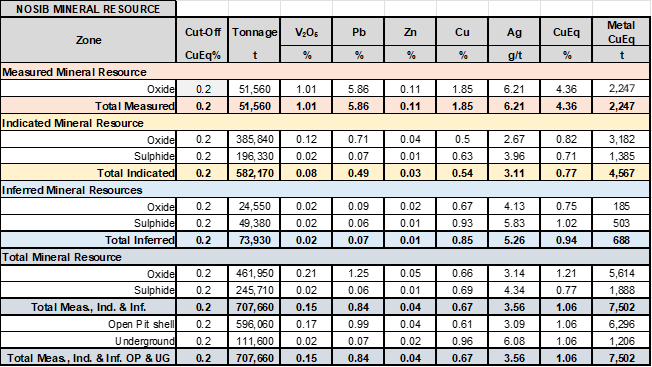
Table 2: Nosib Prospect, Maiden Mineral Resource estimate:
The Mineral Resource estimates for copper (Cu), lead (Pb), vanadium (V2O5), zinc (Zn) and silver (Ag) were performed in accordance with The Australasian Code for Reporting of Exploration Results, Mineral Resources and Ore Reserves (JORC, 2012). Shango verified and prepared the Golden Deeps database for 3-d modelling and Mineral Resource estimation by means of applying industry best practices.
The drill-defined Nosib deposit includes stratiform sulphide copper-silver mineralisation hosted by the Nosib Group arenites and diamictite/conglomerate, which underlies the carbonate units of the Tsumeb and Abenab sub-groups and hosts the majority of the mineral deposits in the Otavi region.
Overprinting the sulphide deposit is a supergene-oxide zone of vanadium-copper-lead-zinc-mineralisation which represents the majority of the Mineral Resources estimated from surface to approximately 80m vertical depth.
The open-pit Mineral Resource estimates were generated via an optimised pit shell (60-degree slope) and declared on the basis of reasonable prospects of eventual economic extraction.
In addition to the open pit Mineral Resources, underground Mineral Resources have also been declared, which are open to the west and at depth and represent a stratiform Cu-Ag sulphide target for further drilling, targeting underground Mineral Resources sufficient to support an underground development (Figure 3).
The maiden Mineral Resource model for the Nosib deposit will be combined with the updated Mineral Resource model and mining studies on the Abenab high-grade vanadium (Zn, Pb) deposit, to produce an integrated mining and processing Scoping Study for the production of vanadium with copper, lead, zinc and silver and potentially other valuable by-products such as molybdenum, germanium, gallium and HREEs. The results of the Scoping Study will be reviewed before further exploration to increase available Mineral Resources is considered and/or the study is upgraded to a PFS following further metallurgical testwork.

